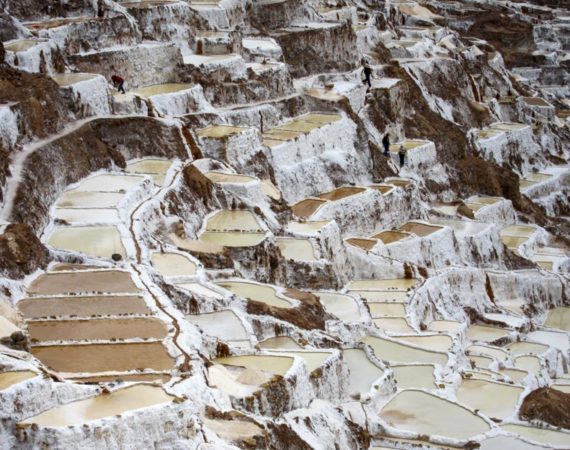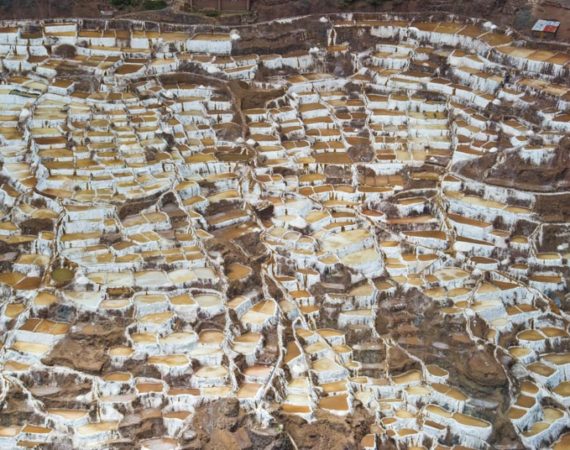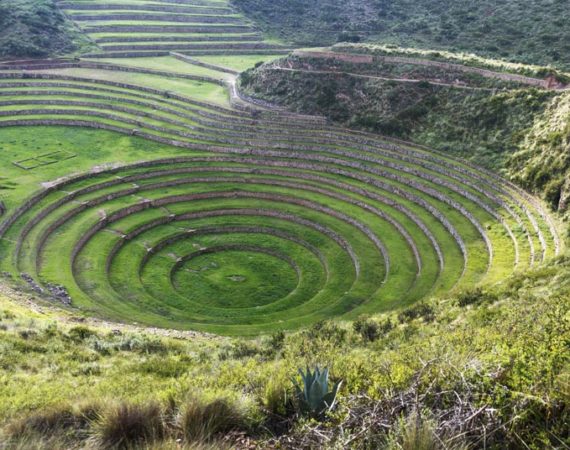Attractions
Archaeological and Historical Complexes: Archaeological complexes of Moray, Ollantaytambo, Historic Sanctuary of Machupicchu, Salineras de Maras.
Living Culture: Gastronomy, Traditional Weaving Techniques – Community of Chinchero.
Natural Complexes: Local Fauna and Flora.
Places
Tour Description
In this route, we will try to understand how the Incas understood the world, the symbolic look they had when building and developing their activities, and the relationship of these activities with the earth and the stars.
Day by Day
CHEQOQ visit
In a Peruvian town called Cheqoq, the Incas devised pre-Hispanic REFRIGERATORS, for the good cold preservation of food, highlighting this system for the use of gutters and mini-tunnels that were used to conduct water and air for the regulation of temperature and hygrometry balances. that could be closed at the will of the caregiver
MORAY’S VISIT
Unique archaeological group of its kind. Giant natural holes in the surface of the land were used to build terraces or agricultural platforms with their respective irrigation canals. The average annual temperature difference between the top and the bottom of the holes reaches up to 15°C in the main depression, about 30 meters deep. In these formations, nature has created an environment, conditions or microclimates that modern man creates in greenhouses.
Moray, due to its climatic conditions and other characteristics, was an important center for domestication, acclimatization and hybridization of wild plant species that were modified or adapted for human consumption. It is a prototype greenhouse or biological experiment station quite advanced for its time. It helped the American man of antiquity bequeath to humanity 60% of the vegetable products that he consumes; it helped the Andean man to consume a thousand and a half different varieties of potatoes, a hundred and a half of corn, and many other products.
However, even today there are still many enigmas about the place, enigmas that are the product of the lack of serious scientific studies that clear up current doubts. The structures found here are typically Inca, however, some suggest that they are earlier structures, at least on the lower terraces.
One of the enigmas is the form of drainage that was used for the water that ran through the canals; It is argued that there must be underground channels built at the bottom of the depressions that allow drainage. It is also estimated that the bottom is on a very porous natural rock formation that facilitates filtration into the interior of the earth; the reality is that even today, at the bottom of the depressions, there are no floods during the rainy season.
Visit of MARAS
The Salineras de Maras have existed since pre-Inca times. They date from a time when salt was a precious commodity, relatively rationed, salt was very important for Peru. If it was not a wealth properly speaking, it constituted a factor of power, it was a payment element of the State, a gift, the offering of a time in which the conservation of food, meat, fish, shellfish was practically impossible without adequate salting . This seems strange to us today, however its value in the past was relative to its scarcity. Let those who doubt their power try to consume everything without a grain of salt: bread, soup, potatoes, meat, etc.
The town of Maras is an interesting testimony since the most important settlers tried to illustrate their weight in society by the opulence of the entrance doors of their houses that still bear the name of the families that built them. Las Salineras are located in an unexpected and surprising place. Hundreds of salt retention pools stood on the flanks of the mountain, hanging in a small ravine that flows into the Sacred Valley of the Incas.
La Sal reaches the creek through a stream that emerges from the left slope of the creek. Large masses of salt are concentrated in the bowels of the mountain. According to the local inhabitants, some investigations have already been attempted to determine its origin and volume, however, none were successful. It slowly dissolves in the charged water that rises to the surface.
Later, this water is drained through an infinity of small channels, towards pools where a few centimeters of saturated water heated by the sun’s rays deposit the salt at the bottom; evaporation generates the formation of salt stars.
So, the franchised families at each pool hunker down all day with their feet soaked in the salt water. They start by scraping the salt retained at the bottom of the pools with some small boards; then they build mounds that must dry before the salt is pocketed.
To be carried on the back of a man, to one of the six deposits where the bag will be weighed. Today, this work remains like a job from another age, exhausting that generates a miserable salary for a product that is imported and exists in quantity.
Lunch in Urubamba
Visit of Ollantaytambo, the last Living Inca Town – 80 km northeast of the city of Cusco and 40 km from Machu Picchu by rail, in the district of Ollantaytambo, province of Urubamba, department of Cusco, it is located at an average altitude of 2,792 m.a.s.l.
In the time of the Incas, cities were called tampus – accommodation. They had the capacity to house
Breakfast at the hotel
Early in the morning we will ascend to the imposing citadel of Machu Picchu in buses to appreciate the complex. We will be able to observe the different construction techniques and a unique architecture in Peru.
Entrance to Machu Picchu
Impressive and colossal citadel is one of the most important tourist attractions in Cusco. 400 years hidden by the mountains and the tropical forest, it was discovered in 1911 by the North American explorer Hiram Bingham. Machu Picchu is a center of worship and astronomical observation, at the same time the private refuge of the Inca Pachacutec. It consists of two large areas, one agricultural and the other urban, where the temples, squares and royal mausoleums built with exquisite perfection stand out.
After our visit, we will take the bus back to the town of Aguas Calientes
free lunch
Return by train and private transport to the City of Cusco
General Information
- Entrance to Checoq, Maras and Machu Picchu.
- Official tour guide.
- Food: 1 Lunch.
- 1 hotel night.
- Private tourist transport.
- Train Ollantaytambo-Aguas Calientes-Ollantaytambo.
- Bus up and down Machupicchu.
- Transportation Ollantaytambo – Cusco
- Tourist Ticket (Moray, Ollantaytambo).
- Lunch and dinners.
- Extra drinks on the trip.
- Tips for the Guide, members of the association, etc.
- Video and/or photographic camera.
- Light clothes for the day, comfortable shoes, rain poncho, warm clothes for the night.
- Small backpack for personal effects, plastic bags to keep effects dry, water bottles.
- Passport.
- Extra money, especially for those who wish to purchase ceramics.
- Water bottles, sunscreen (the sun is stronger at altitude), personal belongings and personal medicines.
Gallery



Recommended Tours
Private Tours
